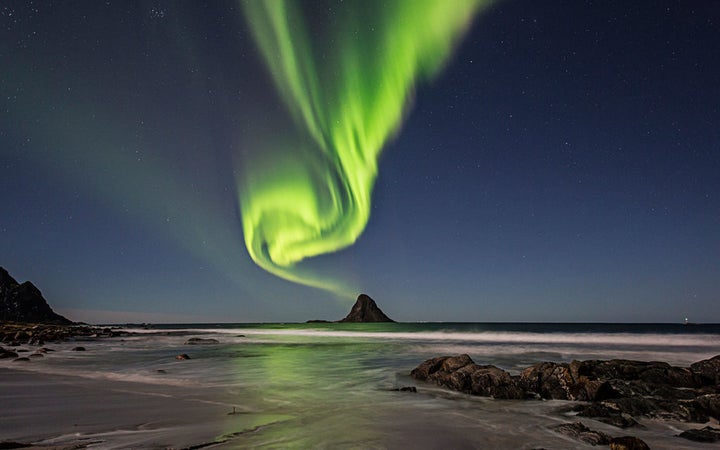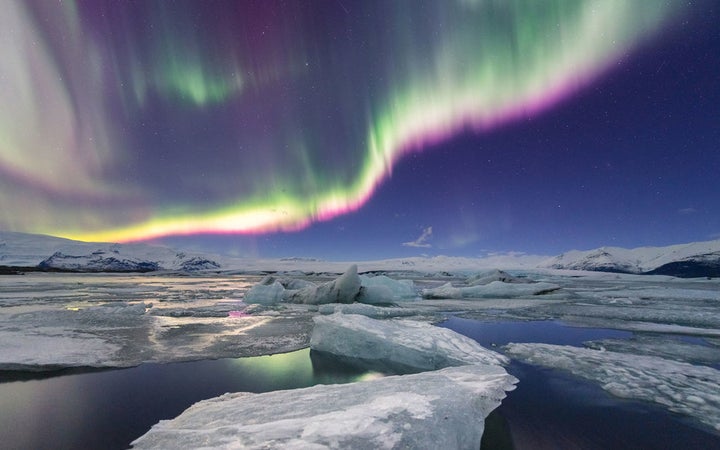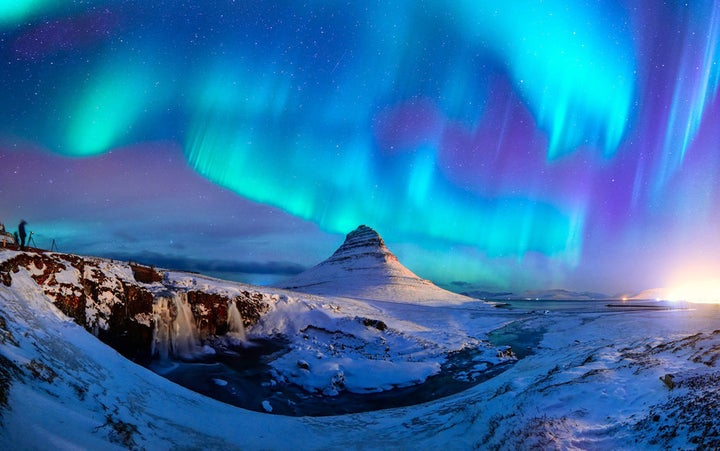By Jamie Carter
This article originally appeared on Travel + Leisure.

Pulsing green curtains and darting, twisting swirls of greens and reds...forests topped by a green mist and twitching displays over fells and mountains.
Seeing the Northern Lights — also known as the aurora borealis — can be a magical experience, and one you’ll instantly want to capture on camera. It takes some preparation, but photographing the aurora borealis (or aurora australis if you’re in the southern hemisphere) isn’t hard to do.
Dump the smartphone
Forget your smartphone’s camera, which doesn’t have a sensitive enough sensor for night photography and, in any case, will shutdown in the likely freezing temperatures of winter.
The wisest option is a DSLR (or any manual) camera on a tripod used with as wide-angle a lens as possible (10-20mm or similar works well), and with an aperture of about f2.8 or less.
If it’s cold, put a spare battery in your pocket to keep it warm. Whatever the weather, clean the lens and remove any filters.
Identifying the Northern Lights

Is it a cloud? Or is that a bucket-list busting borealis before your eyes?
Your camera is much more sensitive than your eyes, so if you think you see a diffuse grey-green glow on the northern horizon — known as the “forest fire” — but you’re unsure, take an image with your camera to check. Even a feint display will look far greener on in a photo than what you actually witnessed. A raging display above your head is unmistakable.
Composing the shot
You need foreground. Sure, point your camera — fitted with absolutely any lens — up at the sky and you’ll get some Northern Lights.
However, only a wide-angle will get you an image that isn’t just some green in the sky. Shots like these just look like green clouds.
A better option is to shoot a great landscape image of a hut, a boat, a lake, a mountain or a forest with the Northern Lights in the background. You may have to get “under” your subject and shoot up.
Being creative

The usual “rule of thirds” guide applies, but be creative. After a few years of cool but unrealistic time-lapses, a few years ago top-end cameras finally got sensitive enough for real-time Northern Lights videos, some shot with drones. Cue an overloaded internet.
Somehow, Northern Lights selfies haven't really yet taken off, but all you need is a shutter-delay of about 10 seconds (enough time for you to race into the shot). Instagram is waiting.
Setting-up the camera
With the white balance on automatic, the focus manually fixed at infinity (if the lens slips, tape it down) and the ISO set to between 800 and 1600 (or even higher if there's no moon), try exposure times of between four and 25 seconds.
What works best depends on how fast the display is moving. A remote shutter is very useful here, though you can use a shutter delay of a couple of seconds, just to avoid camera shake. The shorter the exposure, the more defined, yet less bright the image will be, which is ideal if there's a really strong display of dramatic curtains and unexpected crazy streaks above you.
If it's a really weak display, a 30 second exposure will get you a green sky, which can look great if the shot nicely composed. If you have a compact camera, try 'night mode', but you will still need a tripod.
Post-processing
Always shoot in the RAW format, which will allow you to remove a lot more noise using Photoshop or similar editing software in post-processing.
However, when editing don't make your image too green. This is probably the biggest mistake made by photographers shooting the Northern Lights for the first time. While it's tempting to up the saturation, be really careful, and barely touch that slider. Your stunning images can very easily be made to look fake and ridiculous.
Coping with disappointment
Attempting to fix a camera on one of nature's most elusive sights doesn't come without hardship. Northern Lights-hunting is best treated like wildlife photography. Put yourself in the right place at the right time—and stay there for as long as possible—and you might get lucky.
That can be difficult in freezing conditions, so take a couple of other lenses with you, and perhaps try a time-lapse of clouds while you wait. If you do get lucky and see a decent Northern Lights performance, don't make the mistake of staying out all night trying to get a glimpse of them again; they only tend to peak once before waning.
Go for the destination

But the best advice? Go for the destination.
Whether it's Alaska or Iceland, Northern Canada, or Lapland, the arctic wilderness is a fabulously picturesque place in winter. Go for the snow, and let the Northern Lights be the icing on your icy winter walkabout.
Jamie Carter is a travel journalist, eclipse-chaser and author of “USA Eclipse 2017 Travel Guide” ebook and “A Stargazing Program for Beginners.”
More from Travel + Leisure: